Primordial Galaxies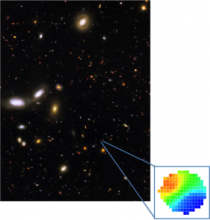
Understanding the nature and the formation mechanism of the first galaxies and black holes in the early Universe is one of the main goals of modern astrophysics. We are using deep observations at radio, millimeter (ALMA, IRAM) and infrared (SINFONI, KMOS, JWST) wavelengths to understand the nature of distant galaxies.
Our group has been particularly involved in the study of the gas content, chemical abundances and gradients and galaxy dynamics in the early stages of galaxy formation. We a leading role in the JWST NIRSpec and NIRCam science teams and are conducting JADES (JWST Advanced Deep Extragalactic Survey), the most extensive JWST programme to characterize early galaxies.
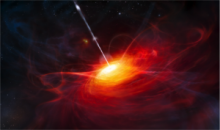 Galaxy – Black Hole Coevolution
Galaxy – Black Hole Coevolution
Galaxies and their central black holes evolve together in a fundamentally connected way. Gas heating and outflows driven by accreting supermassive black holes (active galactic nuclei, i.e. AGN) have been shown to substantially affect the evolution of star formation in their host galaxy.
Our group has lead the way in the study of massive molecular outflows in AGN hosts, both locally and at high redshift, by tracing the gas dynamics through infrared and millimeter observations. We have have expertise in the study of the gas kinematics in quasars and Seyfert galaxies in the rest frame optical using a variety of facilities (SINFONI and SDSS-IV MaNGA).
Nature or Nurture? 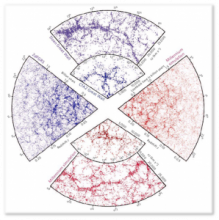
In addition to internal processes, it has long been established that galactic environment plays an critical role in determining the properties of galaxies.
It has also recent become clear that galaxy-wide star formation is driven by the interplay of several complex physical processes, including inflows of pristine gas and outflows of metal-enriched gas due to supernovae and/or AGN. These 'feedback' processes play and crucial role in the modern understanding of galaxy evolution.
By studying the relationship between galaxies and their environments (both locally and in the distant Universe), their star formation properties and chemical abundances and building physically-motivated evolution models our group aims to shed new light on the processes shaping galaxy evolution. The up-coming MOONS instrument on the VLT will allow us to trace the cosmic web more than 10 billion years back in time.
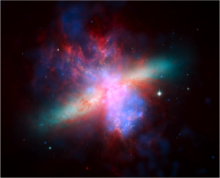 The Life Cycle of Galaxies
The Life Cycle of Galaxies
The interstellar medium (ISM) plays a central role in galaxy evolution, providing the fuel for star formation and also hosting the “fossil record” of the galaxy formation history.
A range of modern facilities are used to investigate the evolution of the ISM; atomic gas with the JVLA (and, in the future, the SKA), molecular gas with ALMA and IRAM, and cool dust with Herschel.
The ISM also carries an imprint of past star formation activity, in the form of its metal enrichment. By measuring chemical abundances, both locally and in the distant Universe, we can investigate the effect galaxy formation and evolution models throughout cosmic history. Modern Integral Field Spectroscopy surveys (like SDSS-IV MaNGA) promise to completely revolutionise our understanding of the field.
Theoretical Models 
In addition to the obesrvational work and development of instruments, we develop and analyze different theoretical models to tackle challenges in galaxy formation and evolution. Galaxies are complex systems, driving by process on a wide range of scales: from star formation and stellar evolution on small scales to cosmological gas accretion and the cosmic web on large scales.
We use theoretical modelling to interpret our observations, constraining both the underlying physics and understand possible measurement biases. In particular, we are interested in linking galaxy properties to the underlying dark matter structure and to perform radiative transfer calculation in order to enable fair comparisons between observations and theory. We also use models to predict and plan future instruments and surveys.
Future Projects
MOONS
MOONS is a near-IR multi-object spectrograph selected by ESO as third generation instrument for the Very Large Telescope. MOONS will obtain spectra of over a million galaxies at z>1, hence providing a high redshift equivalent of the SDSS. These spectra will enable the identification and characterisations of galaxies, at at the peak of cosmic star formation, spanning a wide range of physical properties and environments. Our team is involved both in the technical and scientific activities.
ELT instrument ANDES 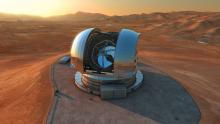
ANDES is the high resolution spectrograph planned for the European-Extremely Large Telescope (E-ELT). Some of the key science cases are the detection of the chemical fingerprints of the first generation of stars (PopIII) in the primordial universe, the variation of the fundamental constants of physics, and the detection and characterisation of exoplanet atmospheres.
SKA

We are involved in the Square Kilometre Array (SKA), the most ambitious project in radio astronomy. This telescope will be located partly in South Africa and partly in Australia. SKA will allow us to probe galaxy formation and evolution to the earliest epochs and "dark ages".

